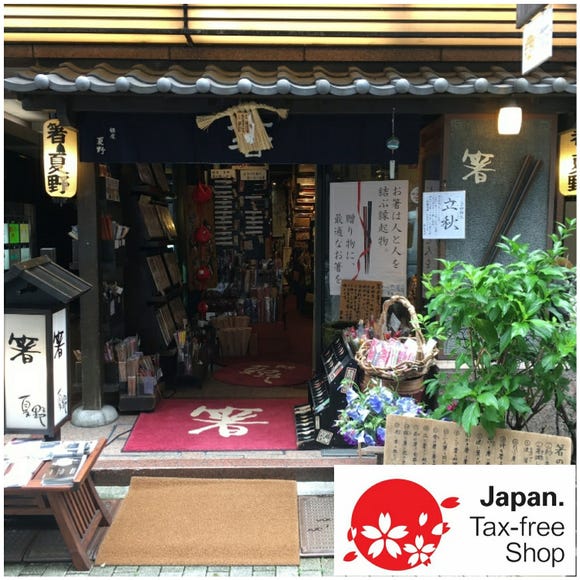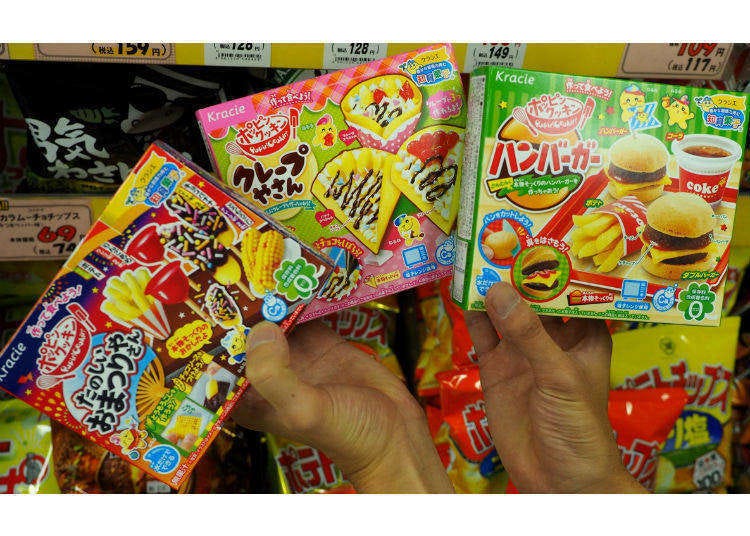
12 Perfect and Quirky Snack Souvenirs to Bring Back From Your Japan Trip!
- Written by: Julie Gozali
Just one visit to the supermarket or any convenience store and you will notice the vast variety of Japanese snacks, from the ones you might be familiar with (KitKat, Pocky and chocolate bars to name a few) to the unique snacks you’ll be curious to try.
We visited this amazing snack store Okashi-no-Machioka in Shinjuku to search for some of the most unique snacks that you can only find in Japan!
Part 1: Snacks with truly Japanese flavors
1. Ume (plum)
Plum flavored snacks are usually a little sour and it might be an acquired taste for some. Families in Japan would eat umeboshi (fermented plum) with their rice ball or other dishes, or simply as snacks. You can find umeboshi in many Japanese snacks or dishes, so don’t be afraid to give it a try!
Chorogi (Muraoka)
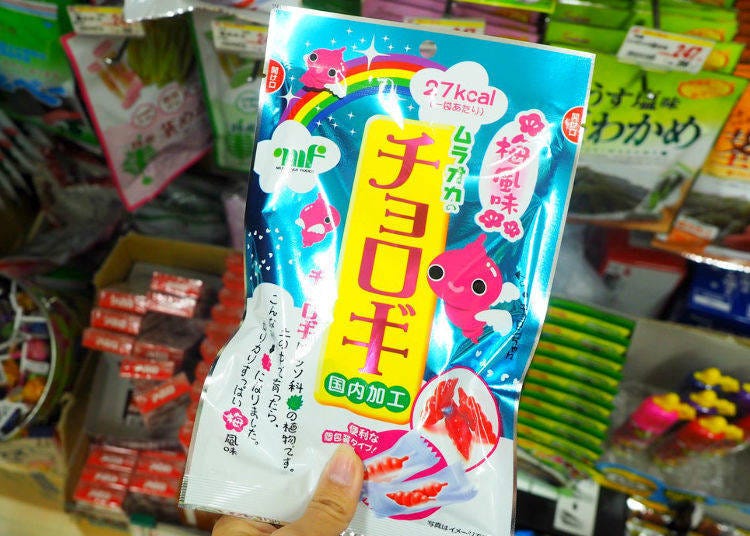
Chorogi shiso (Japanese artichoke) is a root vegetable that can be eaten raw, pickled or cooked. It is known to have health benefits and is also used in Chinese herbal medicine. This healthy plum-flavored snack is a great beer snack.
Otokoume Gummy (Nobel)
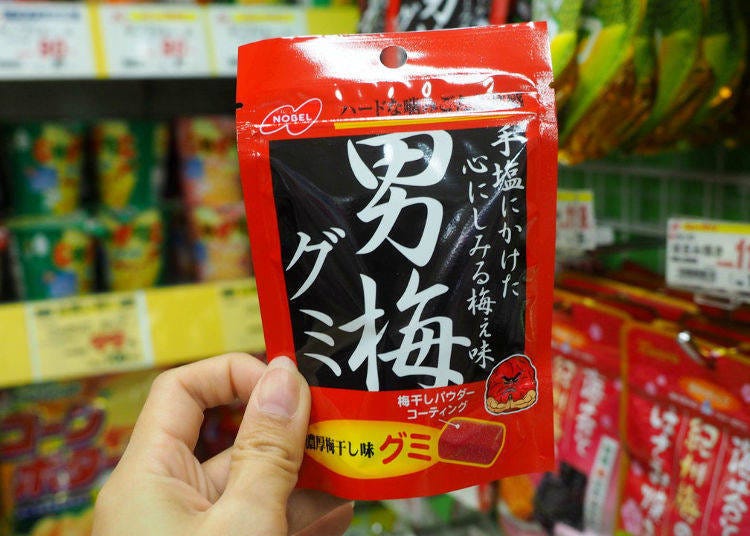
Otokoume gummy literally means ‘manly plum gummy.’ It has a hard and chewy texture with rich umeboshi flavor. Yes, it is sour, but that’s also the reason why plum flavored snacks are very addictive!
2. Seaweed
Seaweed is a very common delicacy in Japan. You can buy seaweed snacks in many different forms and textures. Okashi-no-Machioka store staff Erika explained the different parts of the seaweeds:
- Wakame: the most common part of the seaweed that is usually crispy
- Kukiwakame: the stem or stalk of the seaweed
- Mekabu: located near the roots of the seaweed and is slimy in texture
Kukiwakame (Kanro)
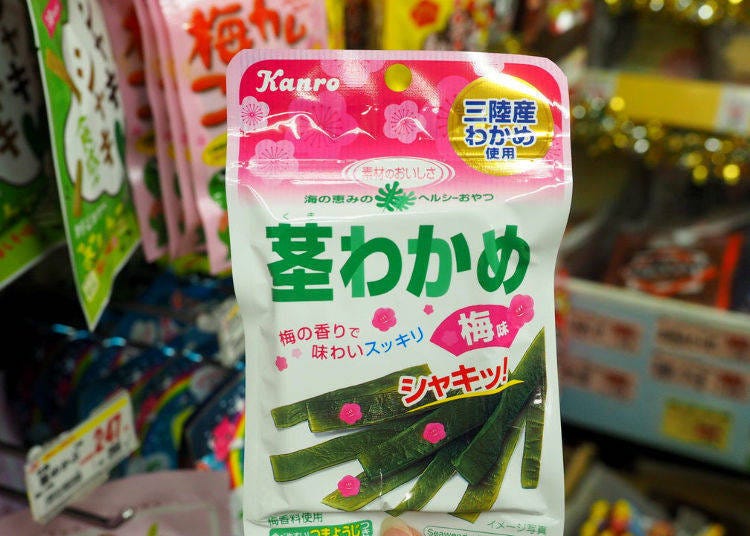
Sanriku Kukimekabu (Sokan)
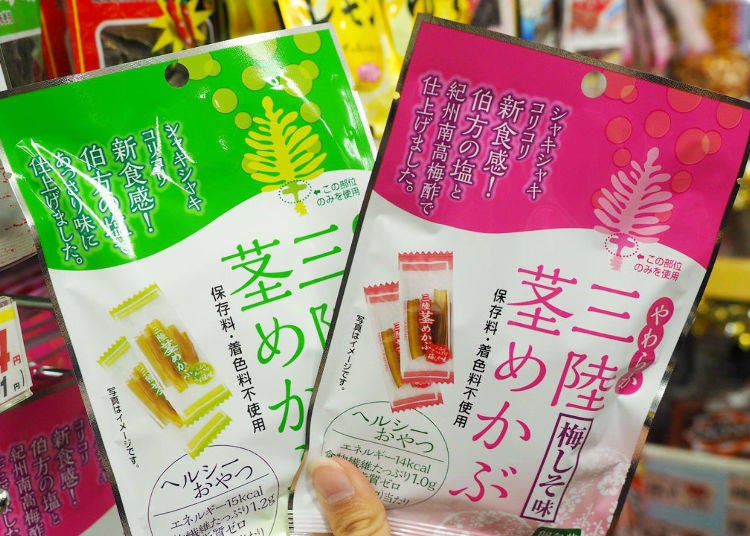
If you enjoy your seaweed in your ramen or around your sushi, you might want to give some of these a try! Some even come with a toothpick so that you can easily eat it. Talk about Japanese convenience!
Roasted Seaweed with plum flavor (Kanro)
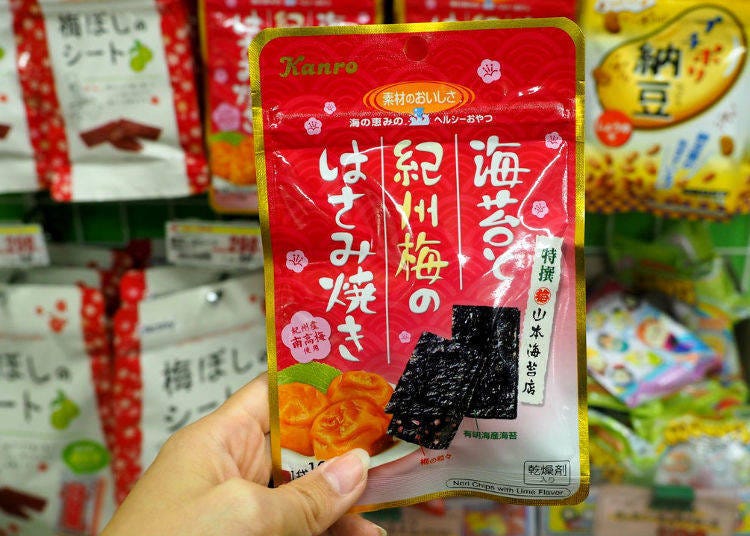
Speaking of seaweed, you can find crispy seaweed snacks seasoned with various flavors. Because we are introducing unique Japanese flavors, what about trying seaweed crisps with plum seasoning?
3. Wasabi
Wasabi is a plant in the same family as horseradish and mustard. Many people will compare consuming wasabi to eating chili, but wasabi stimulates the nose more than the tongue.
Kameda no Kaki-no-tane Wasabi (Kameda)
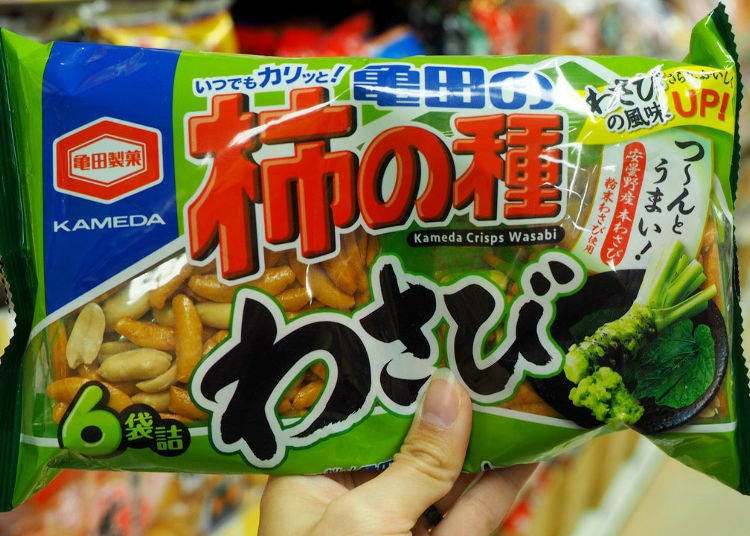
Wasabi Nori Tarou (Kadou)
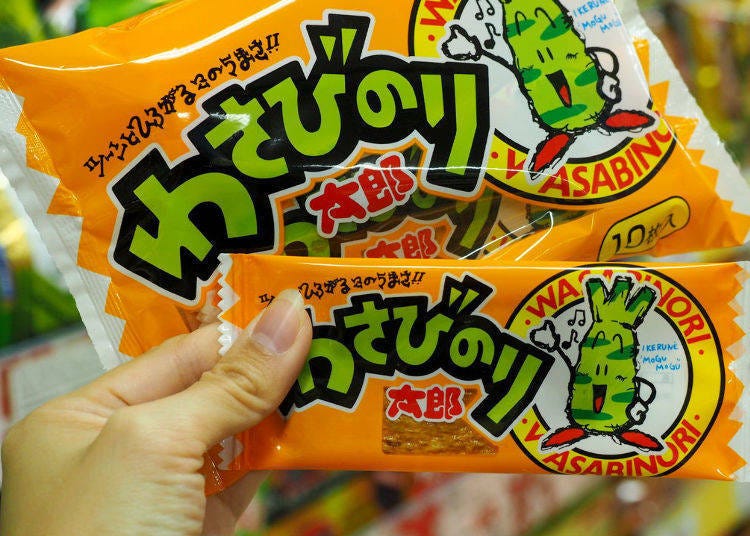
Wasabi snacks in Japan include seaweed with wasabi flavor (yes, seaweed is very Japanese indeed) or wasabi soy-flavored rice crisps. Each package contains small packets of snacks that you can give as souvenirs.
4. Roasted Soybean Flour (Kinako)
Kinako is produced by finely grinding roasted soybeans into powder. You can find kinako in many traditional Japanese desserts, for example: dango (rice flour dumplings) and warabimochi (jelly-like bracken starch covered in kinako).
Kinakobou (Yoshinaga)
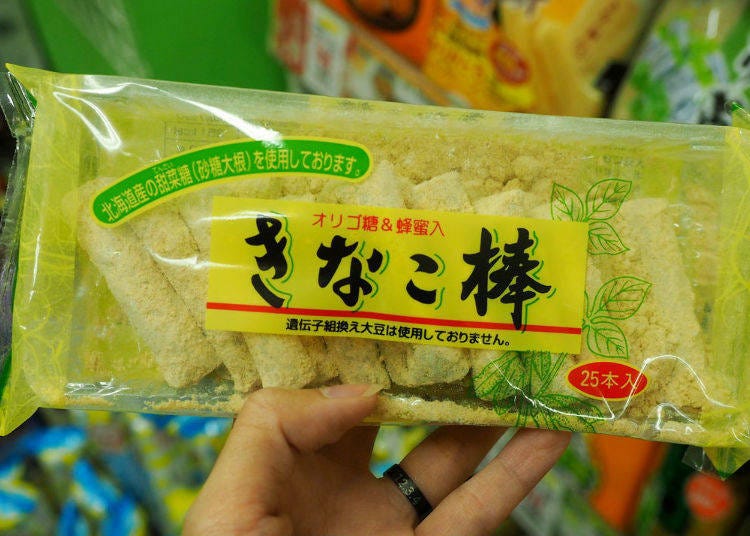
Kinakobou is sold in many dagashi (cheap snack) stores and it literally means ‘kinako stick.’
Tirol Choco Kinako Mochi (Tirol Choco)

Tirol Choco Kinako Mochi is one snack that tries to emulate the taste and texture of chewy rice flour covered in kinako, but in chocolate form. This puts a modern twist to the well-loved Japanese confections and is definitely a good way to give this flavor a try without being too adventurous.
5. Fermented Soybean (Natto)
In listing out unique Japanese flavors, one that comes to mind is natto or fermented soybean. Natto is definitely an acquired taste due to its strong flavor, pungent smell and slimy texture. Natto is commonly eaten for breakfast in Japan.
Umaibo Natto Flavor (Yaokin)
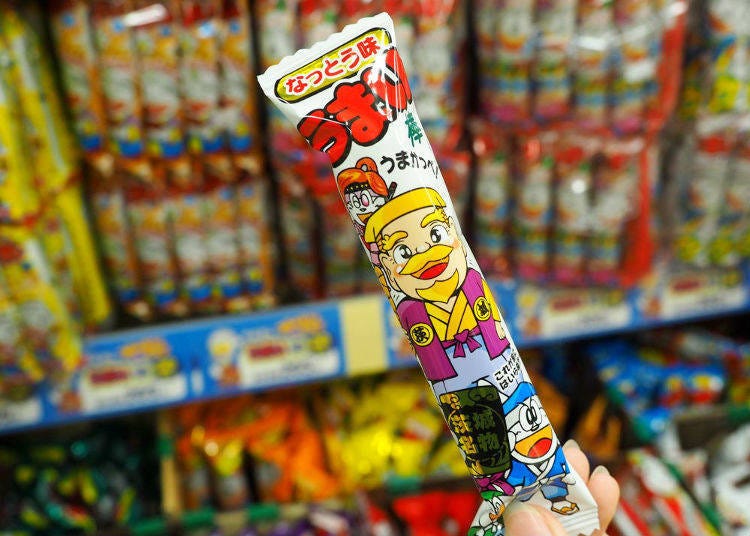
If you’re up for more, you can give dried natto snacks with shoyu flavoring a try. It is considering a healthy way of snacking, so even if you aren’t sure about the taste, at least it’s good for you.
Puchi Pori Natto (Kanro)

If you’re up for more, you can give dried natto snacks with shoyu flavoring a try. It is considering a healthy way of snacking, so even if you aren’t sure about the taste, at least it’s good for you.
6. Yuzu
Yuzu is a citrus fruit that has a sour taste with slight bitterness to it. Yuzu is used in many Japanese cuisines and is also made into liquors.
Sonomanma Yuzu/Lemon (Lion)
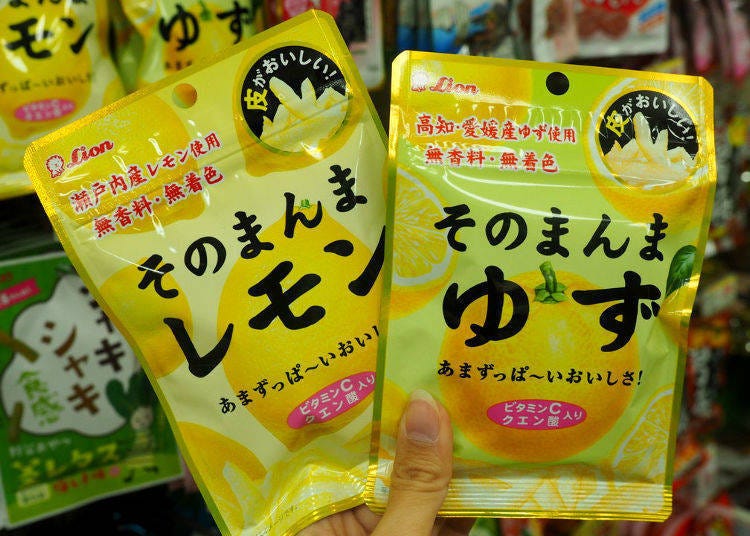
Dried yuzu peels preserved in sugar and honey is both delicious and rich in vitamin C. It has a good balance of sweetness and sourness, making it a refreshing snack to take with you on the road.
Part 2: Snacks that are Unique in Their Own Way
Now, if you’re not the most adventurous with your food, we have a list of Japanese snacks that are unique in other ways. Okashi-no-Machioka shop staff Erika also helped pick a number of interesting snacks that tourists might want to try. Let’s check them out!
7. Good Luck Chocolate Coins - Go-en Ga Aru Yo (Tirol Choco)
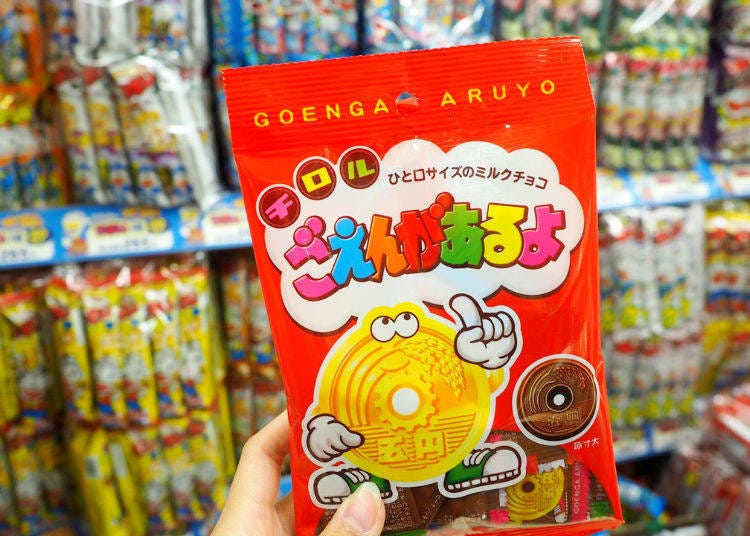
Five yen in Japanese is pronounced ‘go-en,’ which is considered lucky. This is because go-en can also mean good luck, specifically in relationships. Erika showed us this 5-yen chocolate coins snack called go-en ga aru yo, which translates to either “there’s 5-yen” or “there’s good luck”. She explained the play-on-words and exclaimed, “You’ll be lucky if you eat it!”
8. Make Your Own Monjayaki
Monjayaki is a type of Japanese pan-fried batter, similar to okonomiyaki but with runnier consistency.
Baby Star Guru Guru Monja (Oyatsu Company)
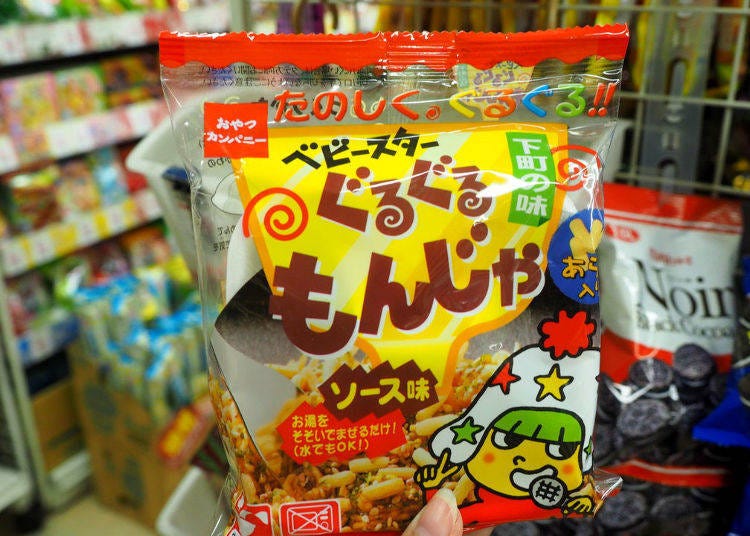
Baby Star, popular for instant ramen edible right out of the packet (without cooking), comes up with a Tokyo-special monjayaki, which is halfway between an instant ramen soup and a crunchy okonomiyaki. That's the best way we can explain it, feel free to do-it-yourself and have a taste!
9. Fish-shaped Taiyaki Snacks
Taiyaki is a popular fish-shaped pancake in Japan. It literally means baked sea bream, however it does not actually contain fish (the name derives from the shape of this snack). It’s best to eat them fresh, although you can also find the pre-packaged version in snack aisles.
Mocchiri Taiyaki (Tada)
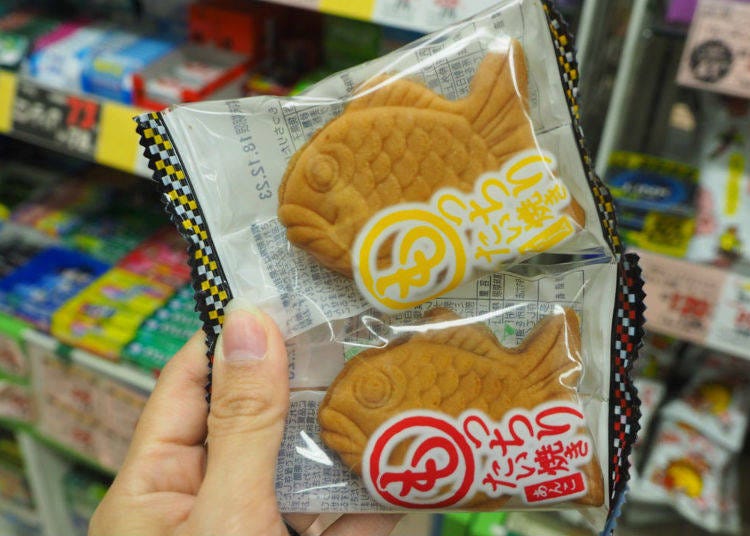
Puku Puku Tai (Meito)
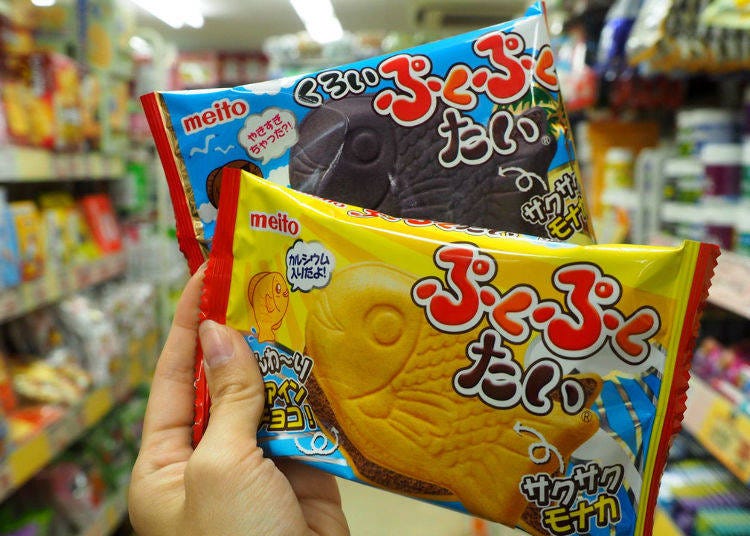
Nowadays, instead of just the traditional fish-shaped pancake with red bean filling, you can also find many modern taiyaki snacks with different textures and fillings. Puku Puku Tai, for example, is a taiyaki-shaped monaka, which are thin crisp wafers with various fillings. The original is aerated chocolate monaka and the black version is caramel-flavored.
10. Interesting Flavored Caramel Candies - Hokkaido Beer Caramel (Donan)、Matcha Caramel (Morinaga)
Caramel candy has been sold in many dagashi shops since Showa era. They are so popular that Morinaga’s milk caramel candy has been made into a McDonald’s McShake.
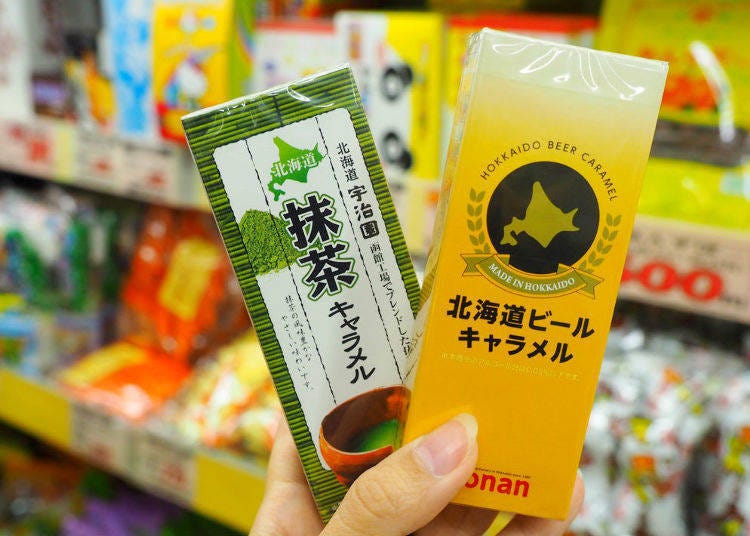
You can find various flavors of caramel candy, such as this Hokkaido beer flavored caramel candy. It mixes the bitter taste of beer with the sweet and smooth chewy caramel. Of course, you can also get the green tea caramel candy if you prefer something a little less… bittersweet.
11. Dried Dumplings?! Gyoza no manma (UHA)
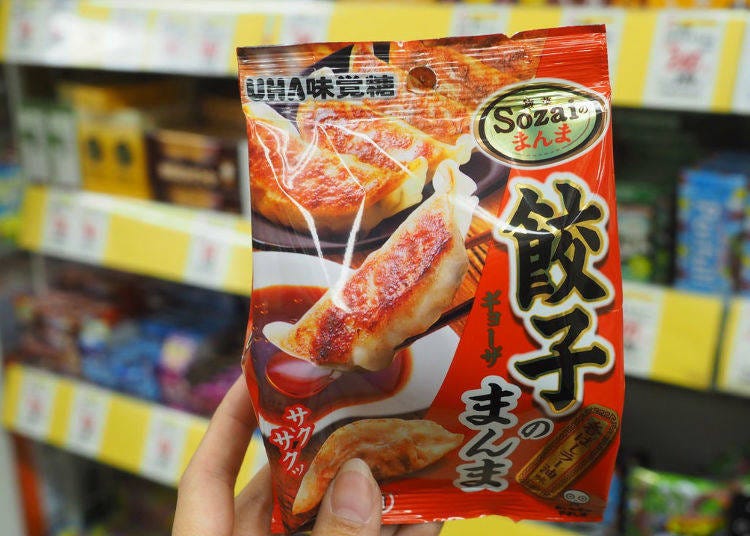
Gyoza-no-Manma looks like real gyoza potstickers and tastes reasonably like the real thing too. While gyoza are usually eaten fresh, this snack basically replicates gyoza but in a preserved food version. Each pack only contains 4 pieces of dried gyoza, so buy a pack and see for yourself if it really looks like an actual store-bought dumpling. While you’re at it, check out other snacks in the Sozai-no-Manma range, such as Korokke-no-Manma that looks and tastes just like the croquette you would get fresh in convenience stores.
12. Make Your Own Candy - Poppin' Cookin' (Kracie)
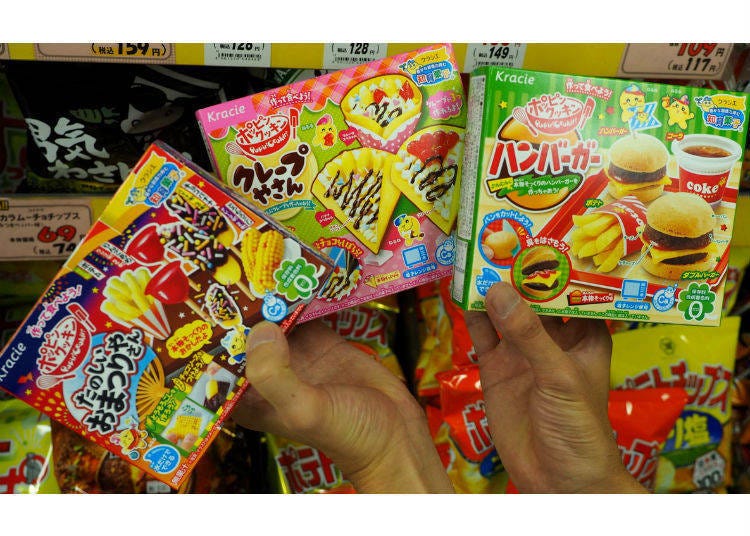
Last but definitely not least, have you ever wanted to make your own candy in the shape of hamburgers, sushi, crepes and more? Wonder no more. Kracie DIY candy kits will bring lots of fun to families with young kids or anyone with curiosity and creativity.
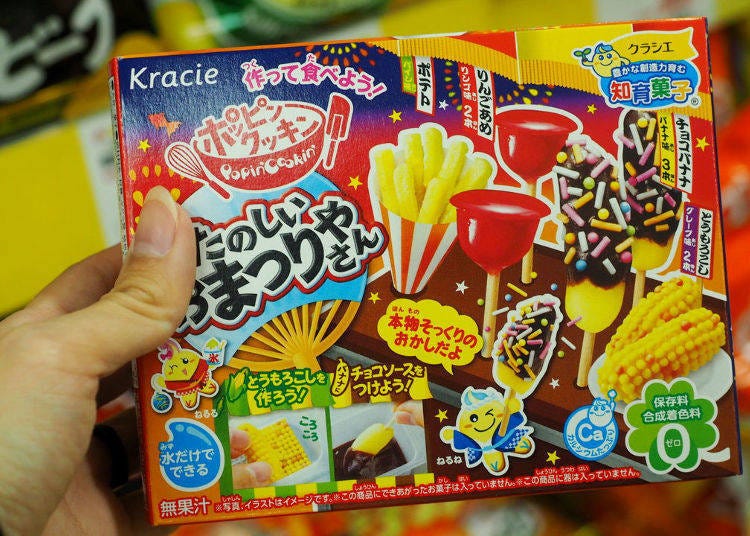
Popin’ Cookin’ by Kracie only has Japanese instructions at the back of the package but that shouldn’t deter you from trying. In fact, now they also provide English instructions on their website (link available on the packaging) so you can follow along. This truly is a different way of enjoying your sweets!
Discover Unique Snacks When You're in Japan

We hope that this list will inspire you to look for more unique Japanese snacks on your next visit to Japan. Whether it is a DIY experience of making your own snack or tasting a totally new flavor, we are certain that you will be pleasantly surprised. Who knows you might fall in love with the taste of natto?
If you enjoy trying new snacks, you should definitely visit a local supermarket or snack emporium like Okashi-no-Machioka while you’re in Japan. It truly is a cultural experience in itself and your senses will surely be delighted. These unique snacks are also perfect for omiyage as you can only get them in Japan!
Just remember that the products displayed may vary depending on the store and some of these snacks might not stay around.
-
Okashi-no-Machioka (Shinjuku)おかしのまちおか 新宿店
- Address 1-12-1 Nishi-shinjuku, Shinjuku-ku, Tokyo, 1600023, Japan / 〒160-0023 東京都新宿区西新宿1-12-1
-
Nearest Station
Shinjuku Station
- Phone Number 03-3342-0321
Hours: 10:00 - 21:30
Julie was one year old when she first visited Japan and ate a soft serve. It was love at first bite. Today, after 7+ years in Japan and now living in Tokyo, she spends her free time eating snacks, collecting cute things, and exploring places with her camera, earning her over 80k followers on Instagram. A Swinburne University grad with a Bachelor of Multimedia (Media Studies), she also collaborates with local governments and small businesses to share Japan with the world.
- Area
- Category
*Prices and options mentioned are subject to change.
*Unless stated otherwise, all prices include tax.
Popular Tours & Activitiess
Recommended places for you
-
Ad

Discover the "Miraculous Forest" in the Heart of Tokyo: The Institute for Nature Study (9 Minutes from JR Meguro Station)
-
Ad

(Opening in Jan 2026) 'THE SUMO LIVE RESTAURANT HIRAKUZA GINZA TOKYO!' 5 Exciting Ways to Experience the World of Sumo!
-

New in Ginza! Air BicCamera Ginza Opens with a Faster, More Convenient Shopping Experience
by: Guest Contributor
-
Ad

Complete Guide to Ueno's National Museum of Nature and Science, the Perfect Place to Visit on Rainy Days or With Children
-

This Winter, Godzilla Takes Over Haneda Airport
by: Guest Contributor
-

How to Get Don Quijote's Exclusive 2025-2026 Winter Gift (+Tax-Free Savings)
Inspiration for Accommodations
-

Enjoy Mt. Fuji from the Comfort of Your Room! Recommended Ryokan with Mt. Fuji View
-

Stay Near the Cherry Blossoms! Hotels for Cherry Blossom Viewing in Tokyo
-

Family-Friendly Hotels with Free Shuttle to Disneyland: Convenient Access for a Magical Stay
-

Top Ranked Hakone Hotels with Mt. Fuji View: Enjoy Stunning Scenery from Your Private Space
-

Convenient Tokyo Hotels with Airport Shuttle: Ideal for Families and Heavy Luggage
-

Stunning Tokyo Tower View Hotels: Enjoy Spectacular Scenery from Your Private Space
-

Convenient Asakusa Hotels with Kitchens: Ideal for Extended Family Visits
-

Experience Luxury: Hakone's 10 Best Five-Star Accommodations
-

Enjoy Mt. Fuji Autumn Leaves! Top Hotels Near the Popular Autumn Leaves Corridor
-

Experience Hakone Fall Foliage from Your Room with Stunning Views
-
Ad

A Tokyo Souvenir with Soul: The Handcrafted Leather of Bunkoya Oozeki
-

Ueno Station Area Guide: Fun Ways to Explore Tokyo's Popular Destination (Area Map & Sightseeing Tips)
-

Great for Day Trips! 5 Popular Travel Bags from Ginza Loft
-

Essential Tokyo: The Complete Guide to Ikebukuro Station
-

Secrets to Shopping in Japan: Guide to Annual Sales in Japan & Where to Shop
by: Miyu Shimada
-

Hello Kitty & More! Top 3 Shops in Asakusa for Limited-Edition Character Merch
by: Naho Jishikyu
- #best ramen tokyo
- #what to buy in ameyoko
- #what to bring to japan
- #new years in tokyo
- #best izakaya shinjuku
- #things to do tokyo
- #japanese nail trends
- #what to do in odaiba
- #onsen tattoo friendly tokyo
- #daiso
- #best sushi ginza
- #japanese convenience store snacks
- #best yakiniku shibuya
- #japanese fashion culture
- #best japanese soft drinks


















